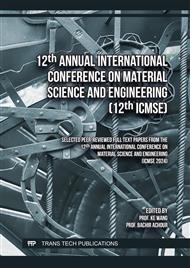p.29
p.35
p.41
p.49
p.59
p.65
p.71
p.77
p.83
1219mm X90 Gas Pipeline Fracture Propagation and Crack Arrest Full Scale Test
Abstract:
Modern pipeline steel has high toughness and ductility, which can effectively prevent long-distance crack propagation. The full-scale blasting test is the most effective method to verify and evaluate the crack propagation and arrest behavior in high-grade pipeline steel pipes. This article investigates the crack propagation and crack arrest behavior of X90 grade natural gas pipeline steel pipes through full-scale blasting tests. The test results show that once the X90 grade natural gas pipeline steel pipe cracks and propagation under a pressure of 12MPa, as long as the Charpy impact toughness CVN of the steel pipe is greater than 286J, it can ensure effective crack arrest of the pipeline, providing technical support for the application of X90 high-grade pipeline steel pipe in high-pressure transmission pipelines.
Info:
Periodical:
Pages:
59-63
Citation:
Online since:
June 2025
Authors:
Keywords:
Price:
Сopyright:
© 2025 Trans Tech Publications Ltd. All Rights Reserved
Share:
Citation:



